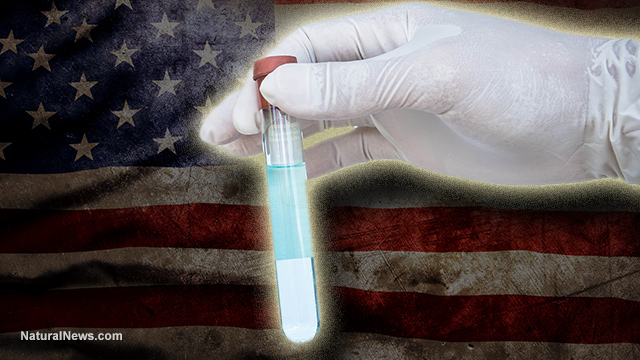Don't drink from the tap: Northeast states on alert after high levels of carcinogenic acid found in water supply
Monday, April 11, 2016 by: David Gutierrez, staff writer

(NaturalNews) Even as the contaminated water crisis in Flint, Mich., continues to make headlines, communities in three separate Northeast states have been facing a crisis of their own: widespread contamination of water supplies with the toxic chemical perfluorooctanoic acid (PFOA, or C8).
PFOA is one of the key ingredients in nonstick cookware and is also used in plastics, wax paper coatings and stain-resistant fabrics. It is a known toxin that accumulates and persists in the human body. Studies have linked PFOA with cancer and with immune malfunction in children.
"It stays in the body for many, many years, and it turns out to interact with processes in our body," said Harvard environmental health researcher Philippe Grandjean, as reported by NPR.
Don't drink the water
The story began in 2013, when a man named Michael Hickey began to wonder if his father's death from kidney cancer might be related to his job at a PFOA factory in Hoosick Falls, NY. Hickey worried about the plant's proximity to village wells, so he paid to have the well water tested.
The tests found PFOA levels above the Environmental Protection Agency's (EPA) safe threshold of 400 parts per trillion. Followup tests near the factory came up at 18,000 parts per trillion, 45 times the safe limit. In November 2015, the EPA said residents should stop drinking or cooking with local well water. That ban was recently lifted, but many residents have said they will stick with bottled water for now.
Just across the border in North Bennington, Vt., high PFOA levels were found in private wells near a former plastics factory. The soil around local homes tested at higher than 20 parts per trillion, the safe level set by the state Department of Health.
Communities in New Hampshire have also found high levels of PFOA contamination in recent months.
'In every state'
Unfortunately, the problem almost certainly goes far beyond these three Northeastern states. In recent years, PFOA manufacturers, including DuPont and 3M, have been sued for contaminating water in Alabama, Ohio and West Virginia. And the Pentagon is testing water at 664 separate military sites for contamination with PFOA used in firefighting foams.
"This is not just a local problem," Grandjean said. "This is a problem which I am sure occurs in every single state."
The Centers for Disease Control and Prevention says that 98 percent of the US public has detectable levels of PFOA in their blood.
In March, the governors of New Hampshire, New York and Vermont sent the EPA a letter, calling PFOA contamination "a national problem that requires federal guidelines and a consistent, science-based approach."
Unfortunately, the EPA has hardly been on the forefront of tackling this problem. The agency's supposedly "safe" threshold of 400 parts per trillion has been criticized as unscientific. When the standard was first passed, the Environmental Working Group accused the EPA of giving communities a "false sense of security."
The level was based on the belief that short-term exposure to PFOA in concentrations of 500 parts per trillion would cause no health effects.
"The fact is that there is no such thing as short-term drinking water exposure," EWG President Richard Wiles wrote in an open letter to the EPA administrator. "People drink tap water every day. PFOA persists in the environment, and thus in water supplies, for hundreds of years. ... Applying this short-term health advisory to long-term exposure to contaminated water directly contradicts both sound science and EPA's own principles of risk assessment and risk management."
In fact, a study conducted at the University of Pennsylvania found that drinking tap water containing 400 parts per trillion PFOA rapidly produced blood levels 10 times higher than the EPA's "safe" threshold.
Levels would almost certainly end up even higher, since most people are also exposed to PFOA daily from non-water consumer sources.
To find out how you can help citizen scientists test America's drinking water to improve water quality and protect public health, visit EPAwatch.org.
Sources for this article include:
NPR.org
NaturalNews.com
EPAwatch.org
Learn more: http://www.naturalnews.com/053617_tap_water_PFOA_chemical_contamination.html#ixzz45jEJvBEp